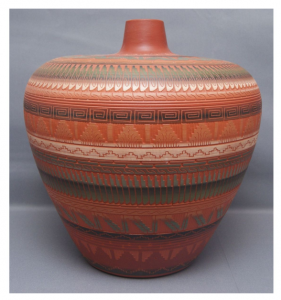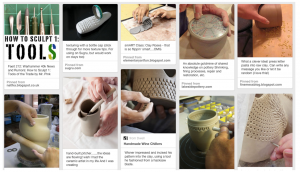Design presentation: Carvy – A Digital Stylus for Pottery Makers
December 9th, 2015 By Chong GuoMy Original idea started with a limited space when I first tried throwing on the wheel. When I reached my hand into the inside of my clay piece, I was totally fascinated by the feel of touching. In that situation, I couldn’t see what was happening inside my jar. I have to use my fingers, my fist, and the rotation of the wheel, to estimate the position, to try my next move. The interactive model can be represented like this: We start with the feelings, then we proceed the feelings using our criterias such as the thickness of the wall, the shape of the surface, and the humidity of the surface. Once we gather all the information we need to make a decision, we push our hands again to perform, to change the pottery. Then we start a new round.
Then I’m wondering, is there a way to work from the inside?
Looking at all those images that people is trying to curve the different forms for their pottery, and the ways to do that are creative and novel. And most of them are seeking for duplications and orders in pattern making. But how could people reach the narrow, dark area inside of the the pottery. Also, the design challenge here is that, if you are shaping the outside of clay, the open space is quite enough to stretch your arm, change positions of hands, twist your wrist. But everything can be changed inside, it can be hard to grab a small tool.

The absence of inner pattern
I’m also wondering when when talk about the pattern, includes the graphical painting pattern and the pattern of repeated shapes. Inter patterns are hard to be found even the in the zen culture from east Asia. As the need of ceramic crafting is shifting to a much more personal side rather than production side. I’m also interested in the idea of smashing ceramics. If we can hide information inside of the clay piece and the only way to see it is to smash it. That will be a Erwin Schrödinger’s pottery, which can be quite fun.
